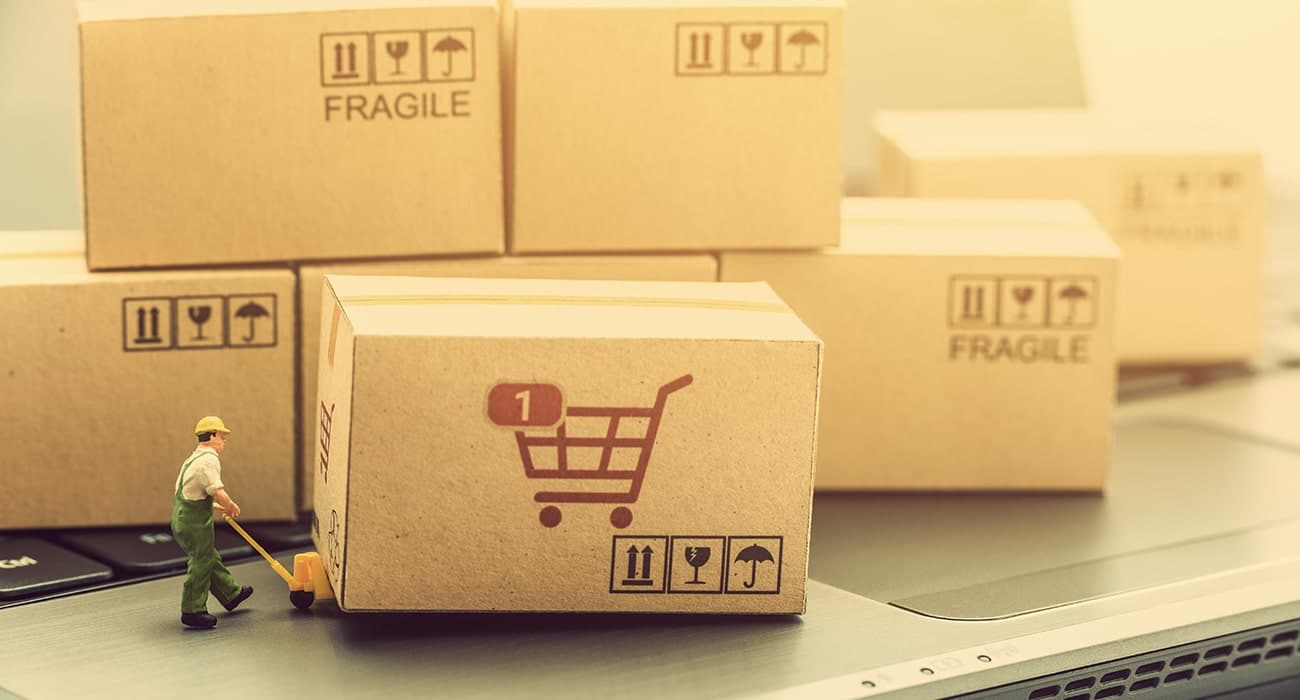FBA sellers often let Amazon take care of everything. If you’re serious about running a successful FBA business, you can’t afford to take chances. Here’s what you need to know about Amazon FBA shipping and returns.
There are a few different parts to the timeline of any single piece of inventory being shipped, so let’s start at the beginning and look at tips for each stage that you manage.
Shipping your inventory from the supplier
First of all, unless you’re a manufacturer or dealing directly with a local supplier, you have to get your inventory shipped to yourself (some ship direct from the supplier to Amazon, but most want to inspect it themselves and prepare it for Amazon).
This is fairly straightforward if you’re shipping domestically, but a huge number of sellers are importing from overseas. Now, not to put anyone off, but there are a lot of complex rules when it comes to importing and many things that can potentially go wrong with shipping. Naive sellers have found this out the hard way.
To begin with, you’re making a decision about how your inventory is getting to you— will it be air freight or sea freight? Air freight will arrive quickly but is usually significantly more expensive, whereas sea freight usually takes a minimum of four to six weeks and is cheaper.
In either case, there can be delays such as port congestion or strikes, so it’s important to add some buffer time. It’s not a good idea to try and cut it close to when you’ll run out of stock or to an important date you want to be ready for.
Once your inventory arrives in the country, the next hurdle to get through is customs. The best tip I can give here is to know the rules ahead of time and be prepared for them. For example, you need to know what is required in terms of:
- Paperwork to prove that your inventory is genuine (customs can destroy products they suspect are counterfeit).
- Country of origin labelling.
- Any paperwork that should be filed ahead of the shipment arriving.
Pro tip: Find an experienced, reliable customs broker who can deal with getting your inventory into the country for you. Look for someone who has experience importing your particular category of goods and who can advise you of the rules.
Sometimes things like labelling requirements need to be raised with your manufacturer and organized ahead of time. It’s a bit of a tricky area because it can often come down to the particular customs agent who inspects your shipment. Some sellers have successfully imported a product for months up until a particular agent took a closer look and found a problem. The best course of action is to do your homework early and ensure you are compliant with the rules for your particular category of goods.
For a list of general requirements, here are a few things customs are looking for:
- Correct and clear invoicing.
- A clear breakdown of the value of goods (in order to calculate any duties).
- Whether goods are correctly labelled and packaged according to the regulations for their category.
- Whether the numbers of goods match up with what has been invoiced (in case you’re trying to sneak in extras without paying duty).
- Whether your shipment contains any prohibited or illegal items.
Shipping your inventory to an Amazon warehouse
Once your goods are past customs, your next step is to check your shipment and prepare to send it to Amazon. Here are a couple of steps to take for preparing your shipment from the “shipment creation workflow” in your seller account.
1. Prepare your inventory
There are four available options for preparing your inventory to ship to Amazon:
- Everything in one box. You don’t need to provide extra details here, but you do need to fill out expiry dates, if applicable, as well as the box weight and dimensions.
- One SKU per box. For shipments of multiple boxes where you keep one SKU per box, you will need to submit box content information using one of Amazon’s preferred methods.
- More than one SKU per box (total 10 boxes or less). Use this option if you meet the following requirements: less than 25 SKUs, 10 boxes or less total and more than one SKU per box. You will need to submit box content information.
- More than one SKU per box (more than 10 boxes). Use this option if you are in excess of 10 boxes, have more than one SKU per box and exceed 25 SKUs. You can submit box content information using Excel or 2D barcodes.
A tip that many online sellers use is to pack the boxes for efficiency first, then note down the box number on the form once happy with how it’s packed. This helps to streamline the process a bit and avoid juggling items around and changing the forms.
2. Provide Amazon with your box content information
An important note here is that as of November 2016, FBA sellers have been required to provide correct box level details to Amazon on all shipments sent to their warehouses. Failure to do so can result in a charge applied per item received and a slower check-in, so take the time to get it right.
3. Check for any discrepancies
As soon as your inventory has been checked in by Amazon, it’s important to check that the correct number has been entered. Mistakes do happen occasionally, so send an inquiry if your account doesn’t add up within a few days.
Managing Amazon FBA returns
Returns are bad for business. Not only will you lose on the actual return, but your account can lose good standing with Amazon if you get too many, resulting in suspension. It’s in your best interest to stay on top of things..
What does this mean? Here are a few action points to take when it comes to fulfilled by Amazon returns:
- Check that the product was actually returned. Customers have 45 days to return the item and if they haven’t, Amazon should automatically reimburse you for the refund that’s already been debited from your account.
- For any product that is deemed “unsellable” (damaged, defective or customer damaged), you’ll need to do something about it. You’re still being charged for inventory that is sitting on the shelf as unsellable, so take one of three options: check it and have it moved into sellable inventory if it’s fit to be sold; make any repairs necessary to put it back into inventory; or pull it from inventory and write it off.
- Understand why the product was returned. If your products are consistently returned as “defective,” you may have received a bad batch from your supplier. Damage (if not caused by Amazon) may be due to poor packaging. You need to review the reasons for any returns, get to the root cause and determine if you need to take action to prevent it from happening again. For example, perhaps you need to go back to your supplier with regard to product quality, or perhaps you need to modify the packaging.
- Review your product descriptions. Are customers receiving exactly what they would expect based on the description they read? If you’re getting returns because the product didn’t meet their expectations, it’s probably time to review your listing and fix up anything that may be unclear.
Being proactive about managing returns will not only help you to mitigate any future loss, but will also ensure you remain on Amazon’s good side. Don’t take returns lightly—the impact on your account can be difficult to overcome.
Notes for Q4
The final quarter of the year is often a time when sellers move more inventory than the previous three quarters combined. This means that you need to be extra vigilant about Amazon FBA shipping and returns.
Here are a few quick tips:
- Organize your inventory early. Most top sellers are sending products to Amazon from September.
- Note Amazon’s key dates for Q4. There tends to be a cut-off date for sending in your goods, especially for any new sellers or for sellers within certain categories.
- Use a good inventory management and forecasting tool to stay on top of inventory. Forecastly is an excellent tool that provides inventory forecasting as well as reconciliation functions.
- Get any returns removed from inventory as soon as possible as Amazon’s storage charges increase in Q4.
Final thoughts
As an FBA seller, Amazon manages your fulfilment, shipping and returns, which frees you up to do other things—but the most successful sellers stay proactively involved.
Do your homework when it comes to FBA shipping and make sure you are familiar with the rules as any discrepancies can cause costly delays in getting your goods into inventory. Keeping up with new information will help you stay compliant with important regulations.
While returns are part and parcel of online selling, don’t treat them casually. Get to the bottom of why they are happening, especially if you start to see them frequently. Managing Amazon FBA shipping and returns efficiently will be key to a successful business.
eDesk is the leading helpdesk for online sellers, purpose-built to address the precise demands of e-commerce. Sign up for a no-hassle, 14-day free trial right now and see the difference it will make to your business.


